
Dr. Zhimin Qu, lead author for this paper, was a visiting scholar from China at Lake Forest College around 1990-91. He was impressed by a demonstration given by Larry Lieberman at the 1990 Summer Holography Workshop II wherein Larry demonstrated making contact copies on film from glass plate reflection hologram masters. Why shouldn’t you be able to scan objects to make holograms, Qu thought?
And he did try it and it worked! Click here to read the paper.
The following photos show some of the apparatus and the results of the experiment. (All photos taken by me.)

Here is a portrait of Dr. Qu (on right) and another of the co-authors, Qiang Feng. They are demonstrating how to make a handheld scanned holo, except with the room lights on for photographic purposes. But otherwise this conceptual “set up” worked!
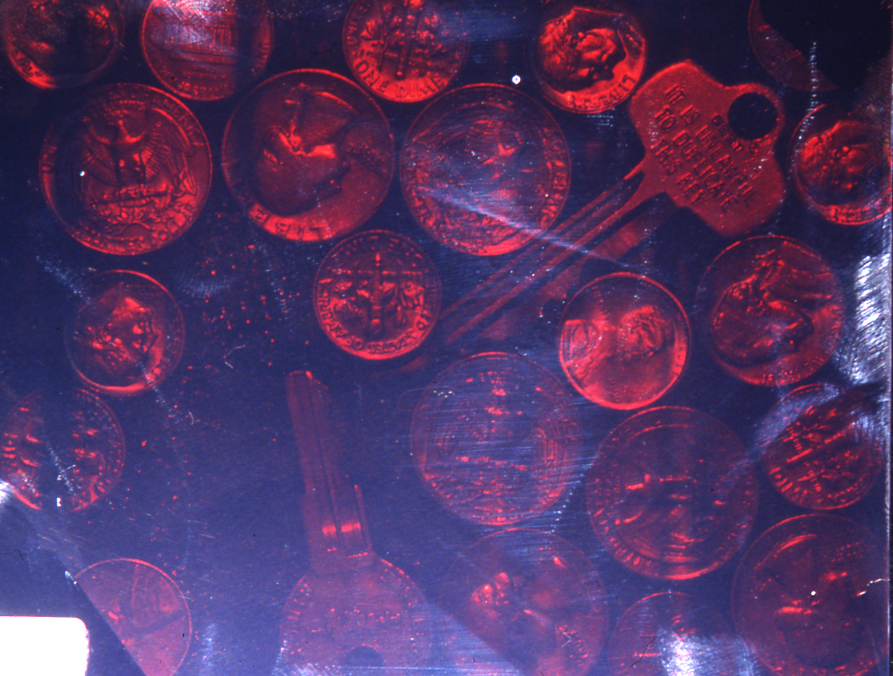
Here is a hologram made in the set up depicted above, both object and laser held in the hands! (With the room lights out and the safelights on, of course.) Notice there are some spastic irregularities, so other experiments were done on a table.

Here is a long view of the table, with the mighty LFC Jodon HN 1576 (putting out >18 mW of hot cathode He-Ne photons) pointing into beam elevating mirror, through a long focal length cylindrical lens to make a strip of light, then off a pair of galvos taken out of a LaserDisc player by MWK, over to the object and plate holder. (I took the original Ektachrome, scanned it, and added the “beams” in Photoshop.)
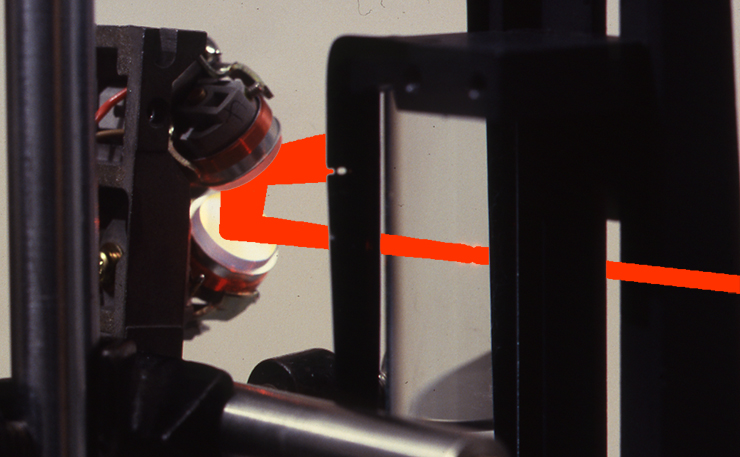
This is a close up of the cylindrical lens and galvos. The cylindrical lens and its holder are ones that came with the Newport Holography Kits. It is spreading the beam horizontally, but after the second galvo it becomes vertical. Only one of the galvos was functioning for this experiment.
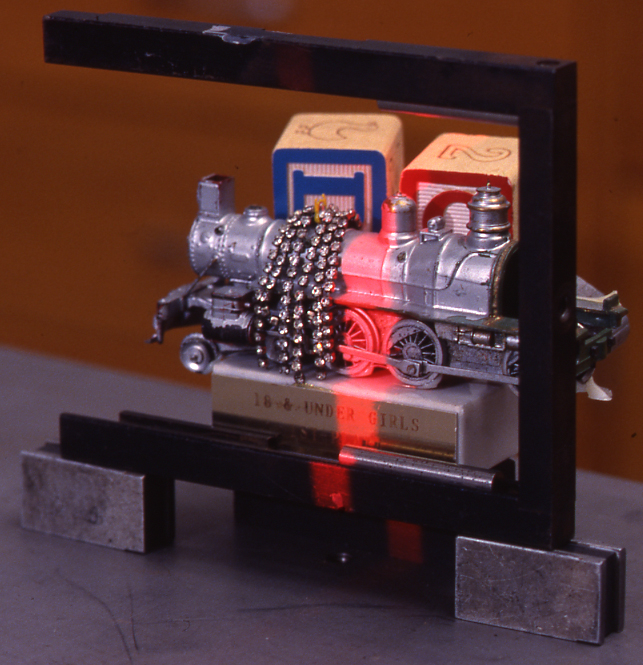
Here’s the object/plateholder set up. For some reason holographers can’t get along without toy trains! (This was the actual laser light photographed, not Photoshopped!)
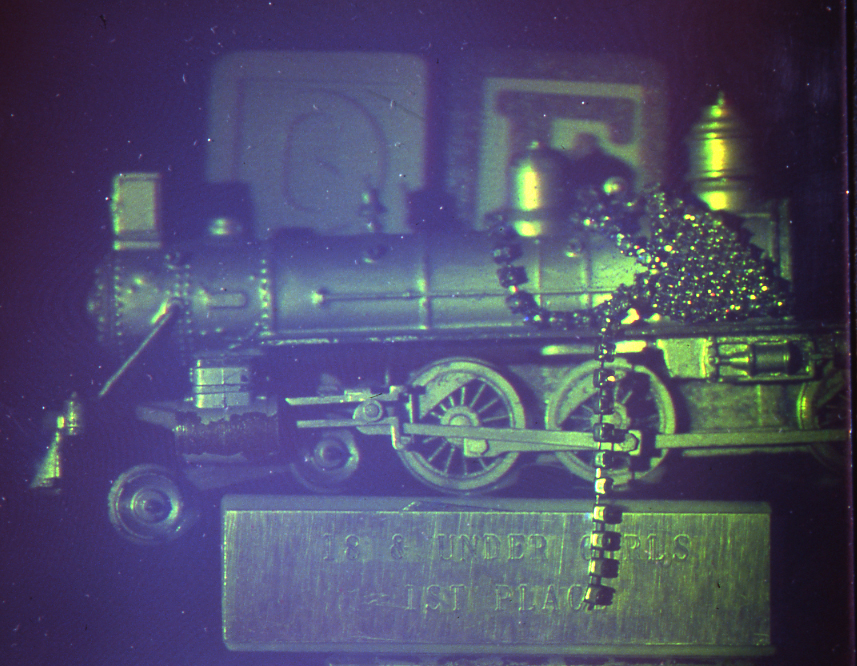
And here’s the hologram of the above! Doesn’t look too different from one that would be made in the conventional manner!
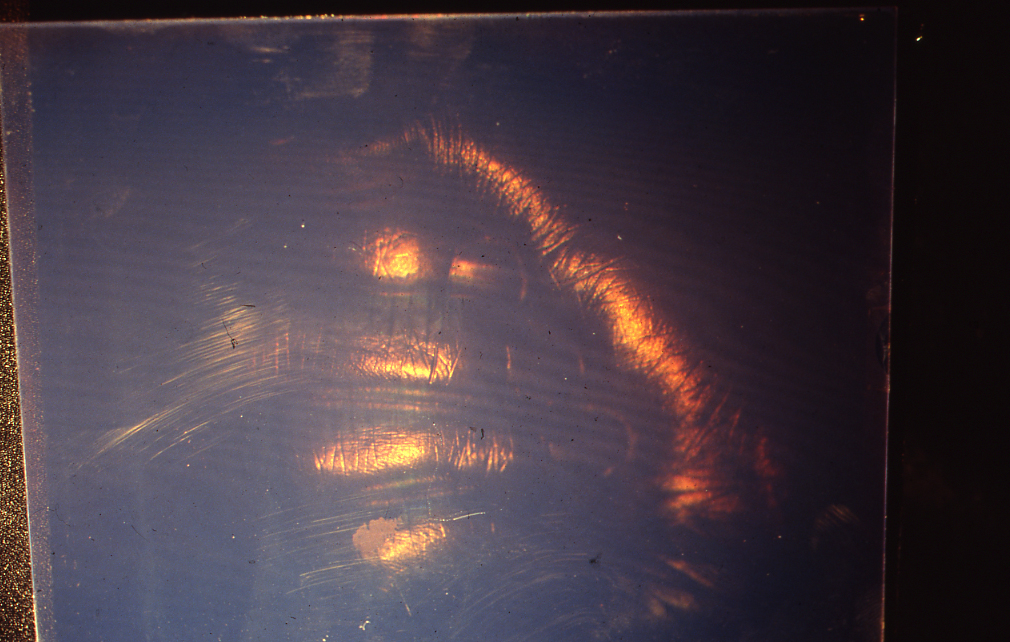
Here is a hologram of Dr. Qu’s hand done in this set up! I procured some silver hair color spray, which could be washed off with water, as it was thought that bare skin might not be reflective enough for the Single Beam Reflection mode.
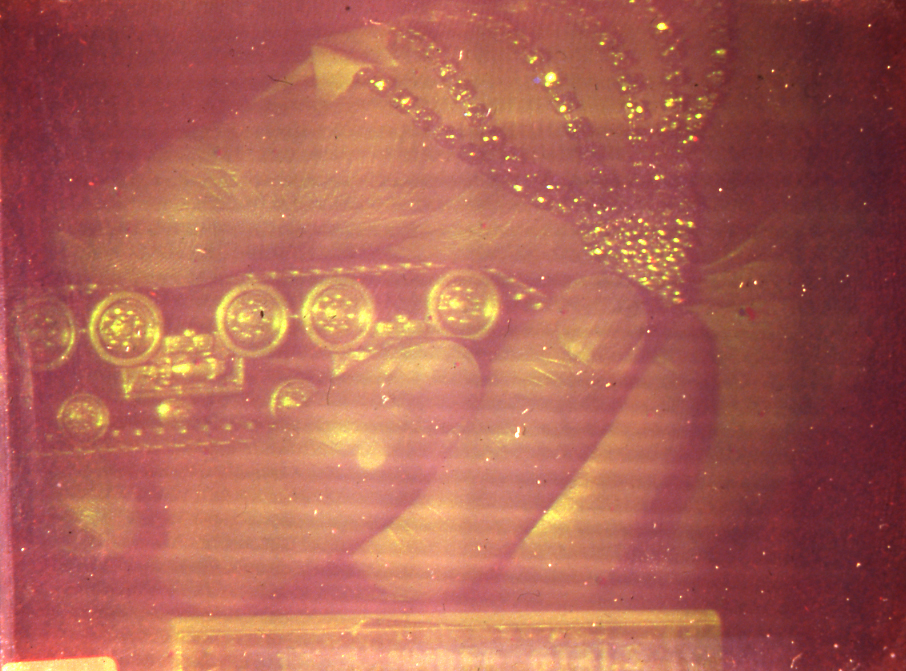
But it turns out that the paint wasn’t really necessary! The toy tank treads were silver painted, the hand not! Dr. Qu’s homage to the famous Tiananmen Square tank face off! This one was done with both galvos flying, not perfectly sync'ed up, notice the scan lines, but still!
We never got around to doing faces, but maybe someone else will!
So then what’s the catch? Why aren’t more holograms made in this manner?
The problem is in viewing angle; the viewer needs to be in a certain place to see the whole object all at once. These types of holograms are not as redundant as the typical Single Beam Reflection. This is because not all the diffusely reflected object light interferes with the reference beam, only the object light that happens to find its way to the same location on the plate as the travelling reference beam is recorded. The impression one gets is of viewing though slits, like cracks in a wall or fence and you have to have your eyes at that location. Photographing these holograms was not easy, as the lens of the camera had to be positioned just right to see the whole image at once.
But it does prove that you can do living flesh with even the gentle Helium Neon laser!